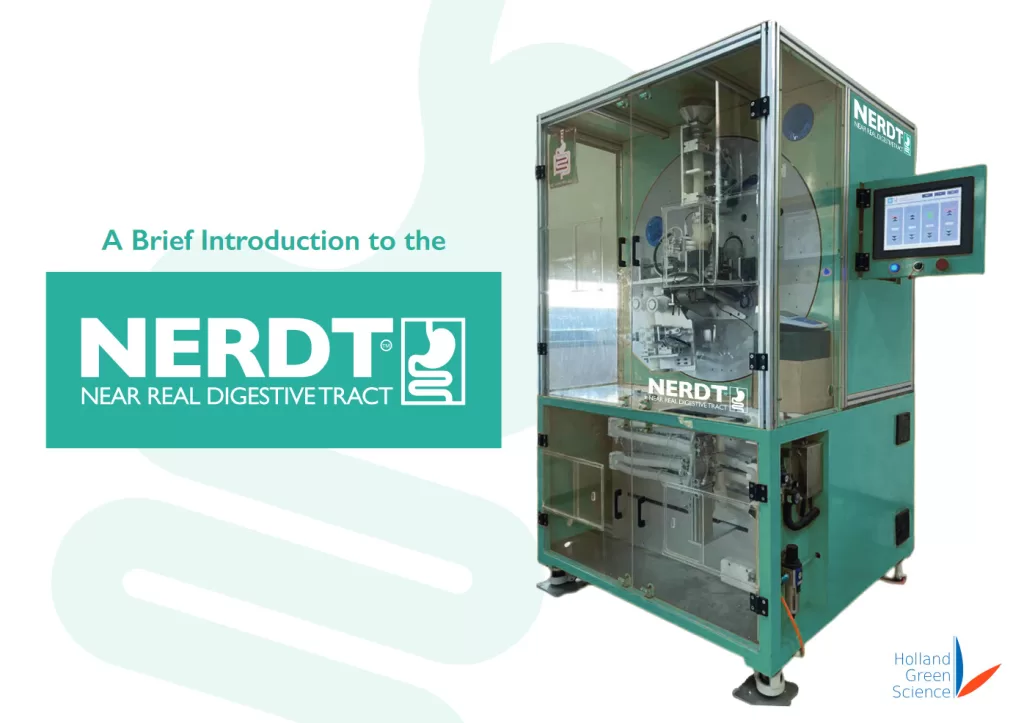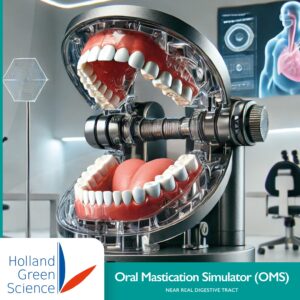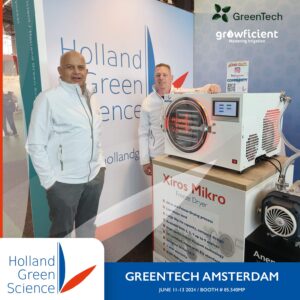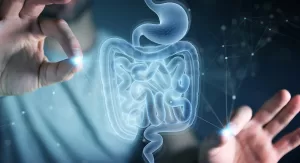NERDT™ (NEar Real Digestive Tract) Technology: Insights into the Biomechanics of Digestion
Introduction
The human body, a marvel of biomechanics, showcases its prowess, especially within the gastrointestinal tract. This complex system, comprising stomach muscles, enzymes, and digestive juices, breaks down food and assimilates nutrients.
NERDT™ (NEar Real Digestive Tract) technology, a groundbreaking innovation by Holland Green Science, provides a full GI tract model that replicates the natural shape of hollow organs and mimics muscular contractions and bowel movements in the digestive process.
This in vitro stomach-intestine system accurately replicates the biomechanics of the digestive system, offering a novel approach to understanding food disintegration, digestive diseases, and the overall digestive process in humans and animals without extensive animal testing.

Understanding the Biomechanics with NERDT™
Traditional research methods often overlooked the biomechanics of the gastrointestinal tract, either needing to include the intricate interplay of forces or heavily relying on animal testing. NERDT™, inspired by the genius mind of Prof. Xiao Dong Chen, bridges this gap.
It emulates the natural mechanical forces and the environment where digestive juices act, offering a holistic perspective of the digestive system like no other in vitro system provides.
The Mechanics of NERDT™ Technology
NERDT™ serves as a promising alternative to animal testing in digestive research. It provides a platform for researchers to monitor, modify, and delve deep into various facets of digestion.
From studying the acidity levels and temperature fluctuations to understanding the role of digestive juices, enzymes, and bacteria, NERDT™ offers a comprehensive environment.
The digestive enzymes released and how bacteria perform can be controlled via the onboard touch screen.
The technology features three distinct models: NERDT Human Adult, NERDT Human Infant, and NERDT Animal Rat, each designed to mimic their respective digestive organs and tracts accurately.
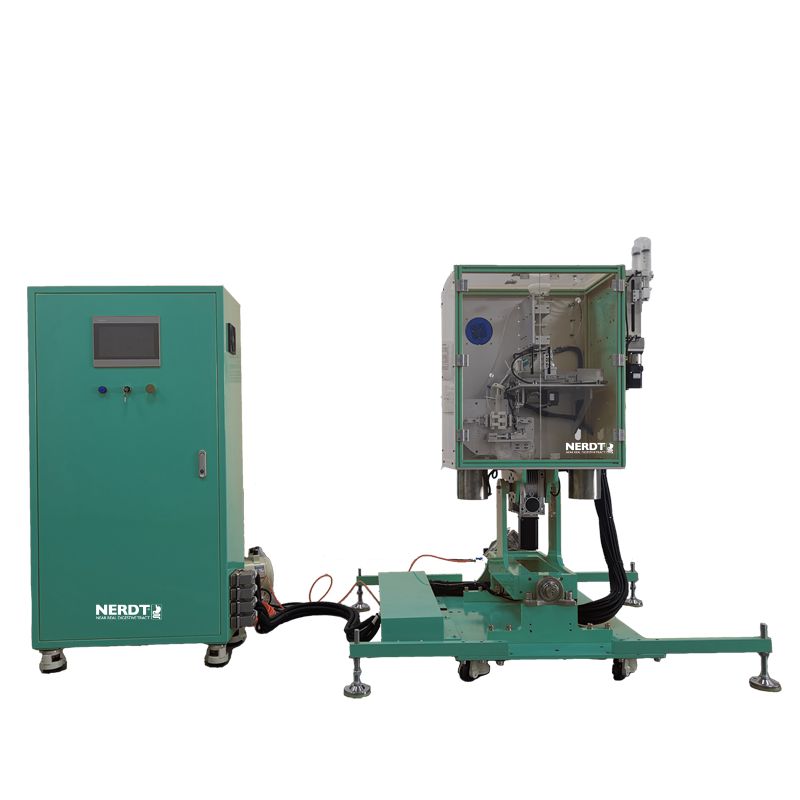
Applications: Digestive and Kidney Diseases
While NERDT™ primarily focuses on the GI tract, its applications are vast. It is a pivotal tool for probing digestive and kidney diseases and understanding their onset and progression.
As new alternative food sources like insects and seaweed gain popularity, NERDT™ can elucidate how these unconventional foods interact with our digestive juices and system.
Researchers can control the lower esophageal sphincter, fully or partially emptying the stomach, opening and closing the duodenum, and managing movements through the small and large intestines. All these processes can be programmed and controlled.
The NERDT system enables researchers to mimic any disease or defect within the GI tract, control food passage types of enzymes, or even add harmful bacteria. This capability allows for the imitation of various defects, from diabetes to inflammatory bowel disease.
Taking samples or placing sensors to collect data for further analysis is possible at any point within the GI tract. This makes it an ideal preparation tool before going to clinical trials.
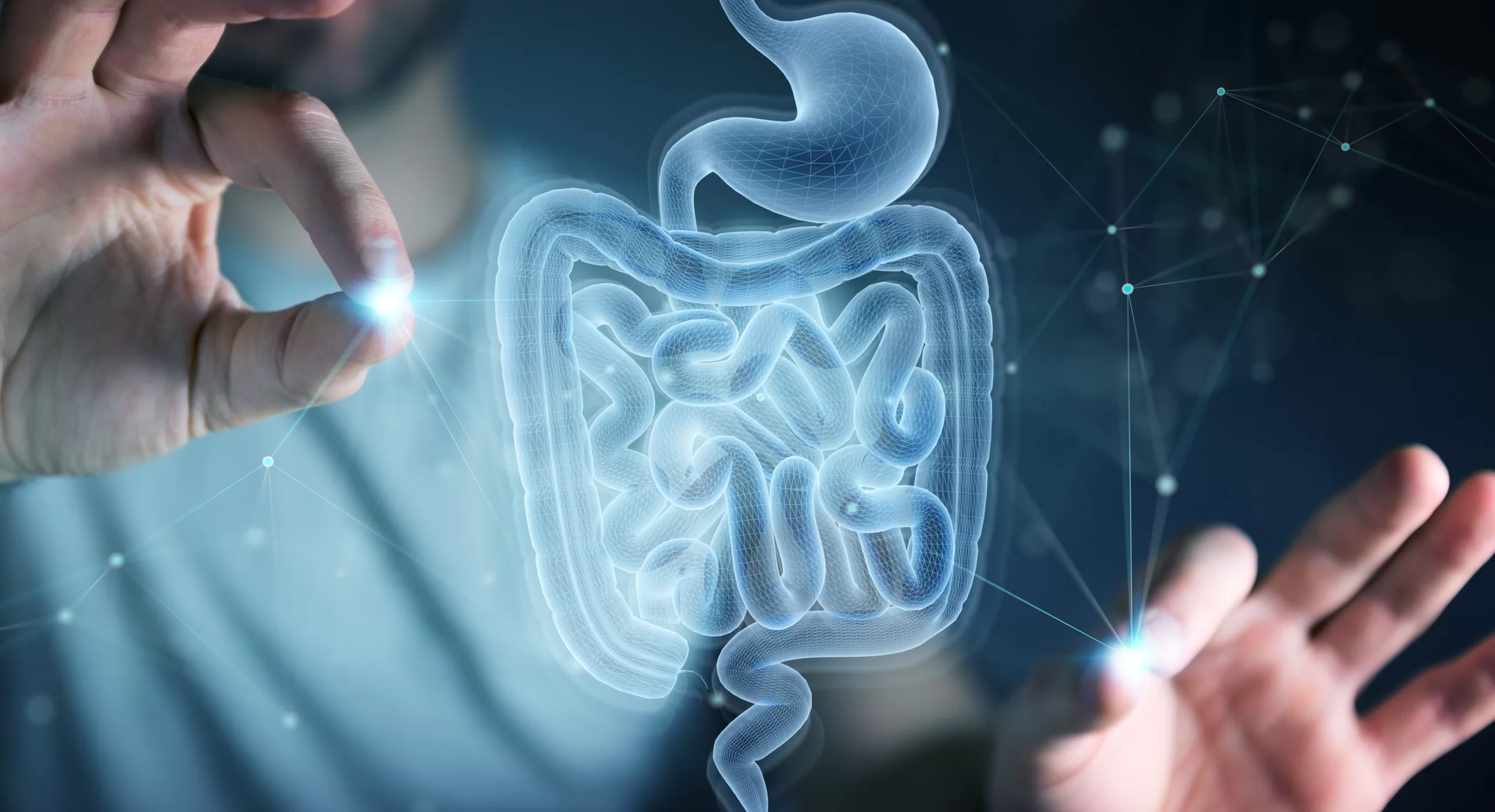
Holland Green Science: Pioneers in Digestive Research
Situated in the Netherlands, Holland Green Science is more than just a company; it’s a hub of innovation. With expertise in botanical extraction and in vitro digestion, they are pushing the boundaries of digestive research.
Collaborating with global partners, they produce premium laboratory equipment, with NERDT™ being their masterpiece.
Positioned near the renowned Wageningen University, a center for food, health, and life science studies, and a proud member of Foodvalley, Holland Green Science thrives in an environment of innovation, surrounded by entities that share their passion for discovery.
Holland Green Science is proud to have the NERDT system used at the WUR Wageningen University and the institute INRAE Rennes.
NERDT™: Unleashing the Marvel Within
At Holland Green Science, we believe in the commitment to quality and pioneering a journey toward a sustainable future. Just as the human body is an intricate marvel of biomechanics, the NERDT™ (NEar Real Digestive Tract) system manifests that same marvel in technological form.
Applications: A Voyage Beyond Digestion
NERDT™ transcends the boundaries of digestive research, venturing into digestive and kidney diseases. As we embrace alternative food sources like insects and seaweed, NERDT™ stands as a guiding light, elucidating how these foods interact with our digestive system and offering insights into disease onset and progression.
Conclusion
As we stand on the cusp of a new era in digestive research, NERDT™ emerges as more than just a technology; it embodies Holland Green Science’s commitment to quality and innovation.
It is a journey into the unknown, a voyage of discovery into the marvels of the digestive system, offering a lens into the intricate ballet of processes that sustain us and paving the way for a future where the enigmas of the digestive system are no longer mysteries but well-understood phenomena.
Backed by Holland Green Science, NERDT™ is not merely a technology; it’s the vanguard of digestive research.

FAQ: Understanding the NERDT™ (NEar Real Digestive Tract) Technology and the Biomechanics of Digestion
The NERDT™ Technology:
What is NERDT™ technology, and how does it relate to the human body’s digestive system?
NERDT™ (NEar Real Digestive Tract) technology, developed by Holland Green Science, is an in vitro stomach-intestine system that closely mirrors the biomechanics of the human or animal digestive system. It stimulates the natural mechanical forces of the gastrointestinal (GI) tract, offering a revolutionary approach to studying food disintegration, digestive diseases, and the overall digestive process in both humans and animals.How does NERDT™ technology reduce animal testing in digestive research?
The NERDT™ system provides a platform for researchers to monitor, manipulate, and investigate numerous aspects of digestion, such as acidity levels, temperature swings, digestive fluids, enzymes, and microorganisms. It replaces animal testing by simulating the digestive system’s natural mechanical forces and environment.What are the different models of NERDT™ technology?
NERDT™ currently boasts three distinct models: NERDT Human Adult, NERDT Human Infant, and NERDT Animal Rat, each tailored to mimic the respective digestive tracts accurately.What are the applications of NERDT™ technology beyond digestion?
While primarily focused on studying the GI tract, NERDT™ also serves as a tool for probing into digestive and kidney diseases and understanding how unconventional foods like insects and seaweed interact with digestive juices and the digestive system.
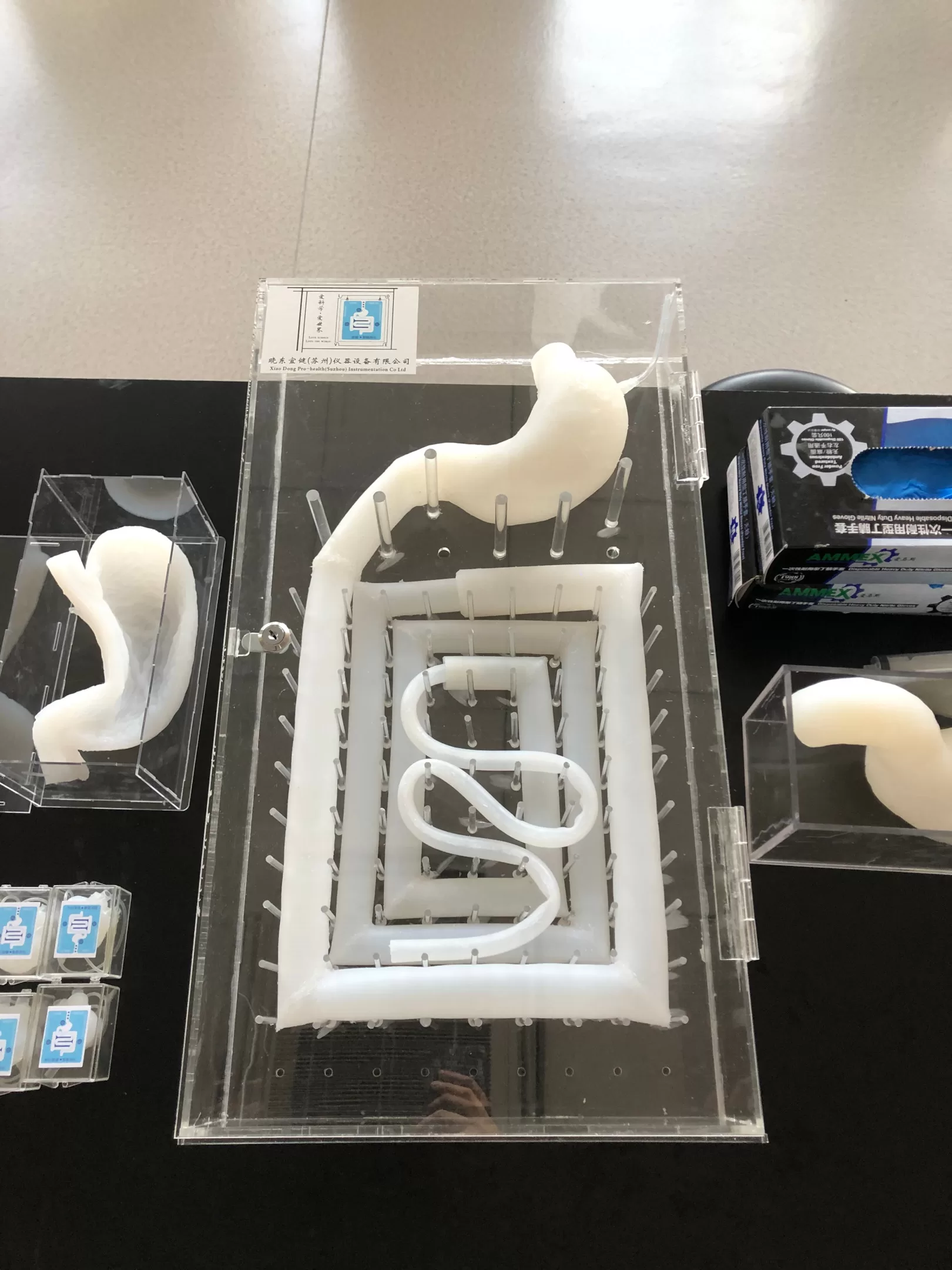
Digestive System and Digestive Juices Insights:
Where does the digestive journey commence, and how does food travel within the muscular tube? The digestive journey begins in the mouth, where enzymes and amino acids collaborate to break down food.
From there, food transitions through the muscular tube of the GI tract, urged forward by contractions known as peristalsis. This adventure culminates in the large intestine, where water is absorbed, transforming the remnants into solid waste.
Throughout this process, the pelvic floor muscle creates a foundation, promoting the efficient progression of food.
How does bile, abundant in fatty acids, bolster digestion, and where does it find its storage place? Bile, synthesized by the liver and teeming with fatty acids, is pivotal in digesting and assimilating fats in the small intestine models.
The gallbladder stores bile, and when the situation demands, bile ducts dispense it, championing the disintegration and absorption of fats.
How does the NERDT™ empty the stomach and how can that be controlled?
When food travels through the GI tract and reaches the stomach, it is massaged by the stomach’s muscular solid walls; in the NERDT, the inside lining of the stomach is an exact copy of that of a human and is massaged by wheels, so food particles become smaller and are ready to move on to the next face via the duodenum to the small intestine. The NERDT may tilt the entire stomach to empty it in stages, totally or partially. This processing can also be managed by closing or partially opening the duodenum, as it does naturally in the body.
References
Here is a list of five studies related to the biomechanics of the stomach:
Brandstaeter, S., Fuchs, S. L., Aydin, R. C., & Cyron, C. J. (2019). Mechanics of the stomach: A review of an emerging field of biomechanics. GAMM-Mitteilungen, 42, e201900001.
This review article summarizes the current understanding of the mechanics of the human stomach and highlights the challenges in mathematical and computational modeling that need to be addressed in this emerging area.Toniolo, I., Berardo, A., Foletto, M., Fiorillo, C., Quero, G., Perretta, S., & Carniel, E. L. (2022). Patient-specific stomach biomechanics before and after laparoscopic sleeve gastrectomy. Surgical Endoscopy, 36(11), 7998-8011.
This study develops computational patient-specific models to analyze the changes induced by bariatric surgery, specifically laparoscopic sleeve gastrectomy.

